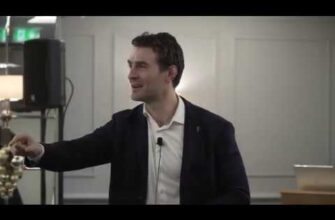Remember that final scene in Ghostbusters? The guys are on top of the high-rise building battling the evil Gozer when he tells them to choose the form of their destructor. Their imagination was going to determine who they were about to fight.
Contents
- Oh, I get it. Real cute! Whatever we think of— if we think of J. Edgar Hoover, J. Edgar Hoover will appear and destroy us, okay? So empty your heads, don’t think of anything. We’ve only got one shot at this. – Peter Venkman, Ghostbuster
- I couldn’t help it. It just popped in there. – Ray Stantz, Ghostbuster
- Share here:
Oh, I get it. Real cute! Whatever we think of— if we think of J. Edgar Hoover, J. Edgar Hoover will appear and destroy us, okay? So empty your heads, don’t think of anything. We’ve only got one shot at this. – Peter Venkman, Ghostbuster
Within seconds of these instructions, the ground shakes as a Godzilla-sized Stay Puft Marshmallow Man angrily stomps through New York City. Ray admittedly stated that he tried to think of something that could never harm them. Why was this so difficult a task? Why couldn’t Ray, a “noted Parapsychologist with multiple degrees…and a good academic background,” clear his mind? The answer lies in the white bear.
The white bear problem is a psychological process where we are more likely to think of something when purposely told to suppress those thoughts. Also called ironic process theory, Social psychologist Daniel Wegner concluded that someone trying not to think of a white bear is more likely to imagine one. Are you doubting this theory? Try not to think about your first grade teacher. Try not to yawn. Try not to look at the clock. By telling you not to take a particular action, the idea has been implanted and you are powerless to stop it.
I couldn’t help it. It just popped in there. – Ray Stantz, Ghostbuster
With our universal susceptibility, it’s interesting that we use the white bear as our go-to move when attempting to motivate ourselves and those around us. We say, “Don’t do this” and are surprised when it’s the first thing we want to do. Effectively extinguishing undesirable behaviors takes more than a list of what-not-to-do; we need a start-doing-that list.
A start-doing-that list (which could be shortened into “to-do” list) is your list of what you’d like to see happen. Want to stop wasting time? Instead of listing all the time-killing websites that you’ll never log onto again, draft an agenda with all you plan to accomplish in the day. Want to lose weight? Instead of telling yourself that you’ll stop eating fast food, pack a healthy-ish lunch. Want a more engaged team? Instead of telling staff to stop moping, roll out initiatives that improve the culture.
When leading, you have the power to supplant mental images. The easy approach is to point out the faults that need to cease, but thought suppression does not solve the problem. It simply creates Stay Puft Marshmallow Men that did not previously exist. Avoid “the don’ts” and start focusing on solutions. Create your plan of attack based upon how you intend to take action. What behaviors, activities, and self-talk can help you address the issue head-on? This is more proactive than a what-not-to-do list and less messy than having to clean up marshmallow man remnants.




